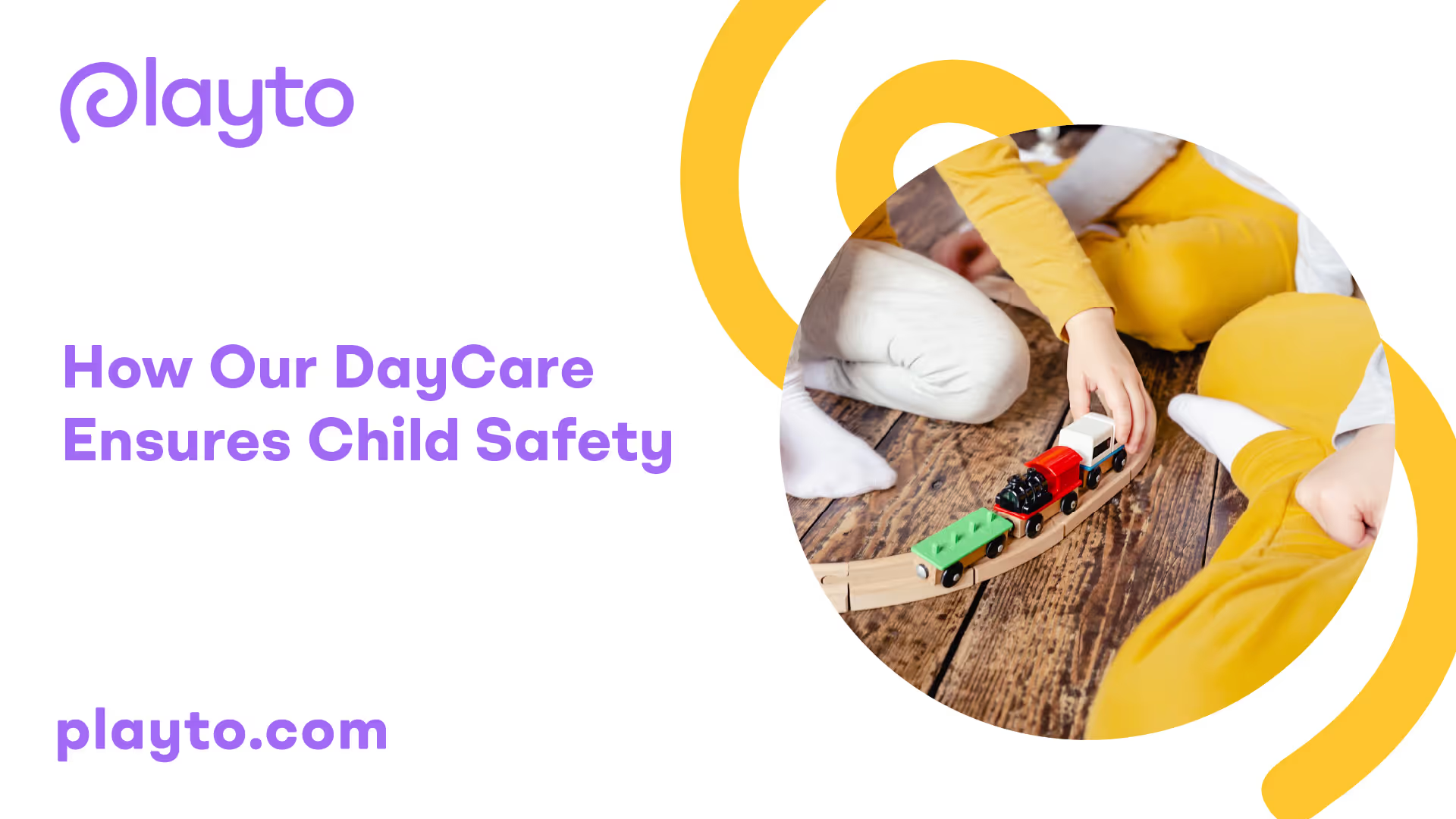
Ensuring Child Safety in Daycare
Ensuring child safety in daycare goes beyond just physical safety; it also encompasses the communication of development concerns and implementing measures to prevent injuries effectively.
Communicating Development Concerns
Child care providers play a vital role in the early detection of developmental delays in children. It is crucial for them to initiate conversations with parents promptly if they observe any potential issues in a child's development. Early intervention is key to enhancing a child's quality of life, learning abilities, and future development.
When parents express concerns about their child's development, child care providers should listen attentively, observe the child to validate the concerns, and then engage in open discussions with the parents to formulate an appropriate plan of action. It is essential to approach these conversations with respect and sensitivity to foster a collaborative and supportive environment for the child's well-being.
Preventing Injuries in Daycare
Preventing injuries in daycare requires a proactive approach to maintaining a safe environment for children. Adequate adult supervision is crucial to reducing the risk of accidents, as children are more susceptible to injuries when left unsupervised.
Drowning is identified as a significant concern, being the second leading cause of injury-related death among children under age 15. An alarming statistic reveals that 70% of preschoolers who drowned were under the care of at least one parent at the time of the incident. To mitigate these risks, child care providers should ensure constant supervision, especially during activities involving water, and conduct regular safety checks to maintain a secure environment.
Moreover, child care providers should select age-appropriate materials, actively supervise children, and educate them on safety measures to prevent accidents. Encouraging children to explore freely indoors while maintaining vigilance is essential to create a safe and nurturing environment within the daycare setting.
Security Measures in Daycare

Ensuring the safety of children in a daycare setting involves implementing robust security measures. These measures play a critical role in safeguarding the well-being of the children and providing peace of mind to parents. Three key security measures commonly employed in daycares are background checks for staff, controlled access systems, and emergency alert systems.
Background Checks for Staff
Background checks are a fundamental aspect of daycare security to guarantee the safety of children and staff. According to Brightwheel, it's imperative that all adults working in childcare facilities undergo comprehensive background checks. These checks are designed to reveal any history of abuse or violence towards children and identify whether individuals are listed on a sex offender registry. By ensuring that staff members have clear backgrounds, daycares can create a safe environment for children to learn and play.
Controlled Access Systems
Controlled access systems are essential in daycare facilities to restrict entry to the premises, enhancing child safety. As highlighted by Brightwheel, various methods such as electronic door locks, security gates, fingerprint scanners, keycards, or access codes are utilized to control access for staff and parents. These systems not only regulate entry but also facilitate accurate record-keeping of individuals entering and exiting the facility. By limiting access to authorized personnel, daycares can prevent unauthorized individuals from entering the premises and ensure the security of the children under their care.
Emergency Alert Systems
In daycare centers, emergency alert systems are vital for rapid communication with families and staff during emergencies. These systems serve as a crucial tool for coordinating responses and keeping everyone informed about potential threats. According to Brightwheel, emergency alert systems may include audible alarms, text/email notifications, or mobile apps that provide real-time updates. By leveraging these systems, daycares can swiftly communicate important information in crisis situations, enabling swift and organized responses to ensure the safety of all individuals within the facility.
By prioritizing security measures such as thorough background checks for staff, controlled access systems, and reliable emergency alert systems, daycares demonstrate a steadfast commitment to child safety. These proactive measures not only create a secure environment for children but also foster trust and confidence among parents, making daycare centers a trusted choice for early childhood education and care.
Health and Safety Training

Ensuring the well-being of children in daycare settings involves comprehensive health and safety training for childcare providers. This training encompasses various aspects, including first aid and CPR, state licensing regulations, and access to free training resources.
First Aid and CPR
Childcare programs often require staff to undergo pediatric first aid training and certification. This training is essential as administering first aid to infants and children requires specialized knowledge and techniques different from treating adults. Pediatric first aid training covers a range of conditions specific to children, equipping childcare providers with the skills to respond promptly and effectively in emergencies.
State Licensing Regulations
State childcare licensing regulations play a vital role in safeguarding the health and safety of children in daycare facilities. These regulations ensure that childcare providers comply with set standards and receive appropriate training to effectively care for children, thereby reducing potential risks and hazards within the daycare environment.
Free Training Resources
Access to free training resources is crucial for enhancing the skills and knowledge of childcare providers. Various online platforms offer courses focused on child care health and safety, providing valuable insights and information to improve the quality of care provided to children. Additionally, organizations like the American Red Cross offer affordable options for pediatric first aid and CPR classes, enabling childcare providers to acquire essential lifesaving skills.
By following state regulations and availing of free training resources, childcare providers can enhance their capabilities and create a safer and more secure environment for children under their care. Effective health and safety training not only ensures the well-being of children but also empowers childcare providers to respond competently to any emergencies that may arise.
Daycare Security Measures
Ensuring a safe environment for children in daycare involves addressing both internal and external safety concerns through the effective implementation of security strategies.
Internal and External Safety Concerns
Internal safety concerns at daycare facilities encompass a range of measures aimed at safeguarding the well-being of children and maintaining a secure environment. This includes implementing physical safety measures such as non-slip surfaces, safe furniture, and age-appropriate toys to prevent accidents [3]. Furthermore, ensuring staff integrity through stringent background checks, professional recommendations, and continuous training is essential to providing a trustworthy and reliable caregiving team.
External safety concerns for daycares extend to potential threats from intruders or kidnappers. Statistics reveal that a significant number of missing children are taken by family members, highlighting the importance of approved pick-up procedures for parents and guardians [3]. Establishing clear policies and protocols for custody battles and unauthorized pick-ups, coupled with staff education on identifying approved guardians, is critical for maintaining a secure external environment.
Security Strategies Implementation
Implementing comprehensive security measures is paramount in daycare settings to protect children and maintain a secure environment. Various strategies can be adopted to enhance security within the facility.
- Security Cameras: Installing surveillance cameras allows for continuous monitoring of different areas within the daycare center, deterring undesirable behavior, and providing visual evidence in case of incidents.
- Controlled Access: Utilizing front door controls with methods like electronic door locks, fingerprint scanners, or keycards restricts unauthorized entry, ensuring enhanced child safety.
- Sign-in/Out Procedures: Enforcing strict sign-in and sign-out procedures for children allows for accurate tracking of arrivals and departures, mitigating the risk of unauthorized individuals accessing the facility.
- Front Desk Monitoring: Having dedicated front desk staff to greet and monitor individuals entering the daycare helps maintain vigilance and control over who enters the premises.
- Emergency Alert Systems: Employing reliable emergency alert systems, such as audible alarms and real-time text/email notifications, enables quick communication with families and staff during crisis situations.
By implementing these security measures and staying vigilant, daycare centers can create a safe and secure environment that prioritizes the well-being and protection of the children in their care. For additional information, parents can refer to the daycare safety checklist to ensure they are well informed about the safety standards and procedures in place.
Creating Safe Environments
Ensuring child safety in a daycare setting involves meticulous planning and constant vigilance to create a secure environment for children to thrive. Three key components play a crucial role in promoting safety within daycare environments: organizing indoor spaces, conducting regular inspections and supervision, and emphasizing the importance of active supervision.
Organizing Indoor Spaces
Preschool teachers take into account the developmental needs of children when arranging both indoor and outdoor spaces within daycare facilities. The organization and condition of materials within the environment are carefully considered to promote child safety [5]. By strategically arranging furniture, play areas, and equipment, teachers aim to create a space that facilitates learning and exploration while minimizing potential risks.
To enhance safety within indoor spaces, it's essential to ensure that pathways are clear, hazards are minimized, and age-appropriate materials are readily accessible to children. By maintaining a well-organized environment, daycare staff can create a secure setting that promotes independence and active engagement among children.
Regular Inspections and Supervision
Caregivers and staff members are tasked with conducting regular inspections of both indoor and outdoor play areas and equipment to proactively identify and address any potential hazards. These inspections are typically carried out before children arrive, ensuring that the environment is safe and conducive to play and learning [5].
Constant supervision is a critical aspect of maintaining a safe daycare environment. Caregivers engage in active surveillance, continuously scanning the surroundings, predicting potential risks, and promptly addressing any safety concerns. By actively supervising children, staff can prevent accidents, respond quickly to emergencies, and create a secure and nurturing space for all children in their care.
Importance of Active Supervision
Active supervision is emphasized as a fundamental tool for preventing injuries and accidents in preschool children. This approach involves caregivers actively moving through indoor and outdoor spaces, proactively scanning for hazards, and making real-time assessments of potential dangers. By staying attentive and responsive to the needs and actions of children, caregivers can intervene swiftly to ensure their safety and well-being.
Promoting active supervision not only enhances child safety but also fosters a supportive and engaging environment where children can explore, learn, and interact with confidence. By prioritizing active supervision practices, daycare facilities demonstrate their commitment to maintaining a secure and nurturing space for all children under their care.
Incorporating these strategies into daily operations helps daycare centers uphold the highest standards of child safety and well-being. By emphasizing the organization of indoor spaces, conducting regular inspections, and practicing active supervision, daycare staff can create an environment where children can learn, play, and grow safely.
Emergency Preparedness in Child Care
In the realm of child care, how daycares ensure child safety is of utmost importance, especially when it comes to emergency preparedness. It is imperative for child care providers to have robust plans in place to effectively respond to emergencies. This section focuses on three critical aspects of emergency preparedness in child care: identifying risks and hazards, developing emergency kits, and updating and practicing emergency plans.
Identifying Risks and Hazards
Child care providers must proactively identify and mitigate risks and hazards that could potentially impact their facilities and the children under their care. These hazards can range from community-level threats like severe weather, pandemics, or natural disasters, to more localized site-specific risks such as heavy objects that may pose danger during emergencies. By conducting thorough risk assessments, child care providers can prioritize actions to address potential hazards, thus enhancing the safety of the children in their care. For further insights, refer to Early Learning Ventures.
Developing Emergency Kits
Developing comprehensive emergency kits is a key component of emergency preparedness in child care settings. These kits should contain essential supplies such as communication tools, first aid kits, children's activities, and daily necessities. Access to vital information, including each child's emergency records like medical details, attendance records, and emergency contacts, should also be readily available. To streamline the management of this information, child care providers can leverage child care management software. Being well-equipped with emergency kits ensures that both child care providers and children have the necessary support during challenging situations. Learn more from Early Learning Ventures.
Updating and Practicing Emergency Plans
Regularly updating and practicing emergency plans is essential for maintaining the effectiveness of emergency preparedness in child care settings. As the needs and dynamics of child care environments evolve, emergency plans must be adjusted accordingly. Child care providers should create contingency plans for staff members, ensure the availability of emergency supplies, and establish a consistent schedule for reviewing and refining the emergency plan. By keeping the emergency plan current and conducting regular practice drills, child care providers can enhance their readiness to respond effectively to diverse emergencies. For further guidance, refer to Early Learning Ventures.
By addressing these crucial aspects of emergency preparedness in child care – identifying risks and hazards, developing emergency kits, and updating and practicing emergency plans – child care providers can create a safer and more secure environment for the children entrusted to their care. These proactive measures not only bolster the safety protocols but also instill confidence in parents regarding their child's well-being while in daycare.
References
- [1]: https://childcare.extension.org/tips-for-child-care-providers-to-communicate-with-parents-their-concerns-about-a-childs-development
- [2]: https://childcare.extension.org/preventing-injuries-in-child-care/
- [3]: https://www.procaresoftware.com/blog/8-daycare-security-measures-you-need-to-take/
- [4]: https://mybrightwheel.com/blog/daycare-security/
.avif)